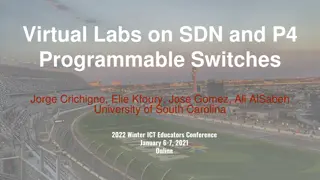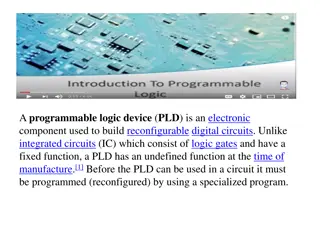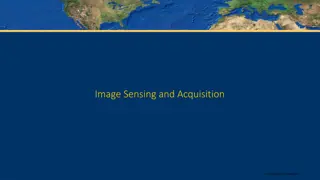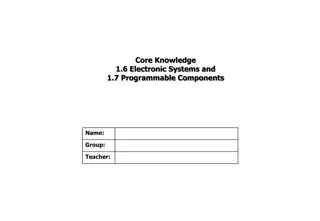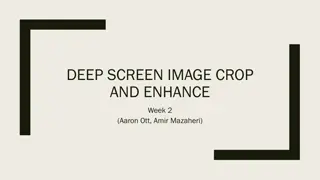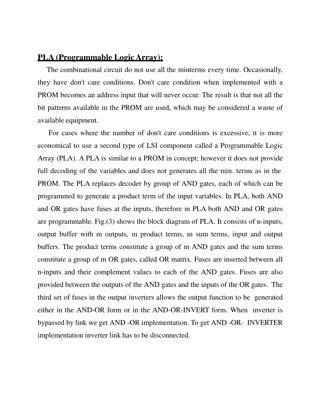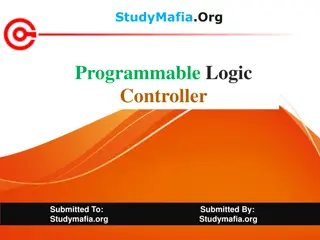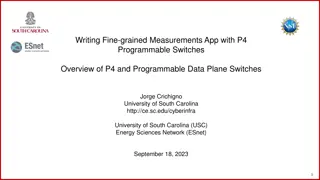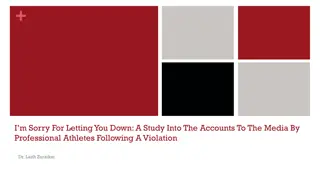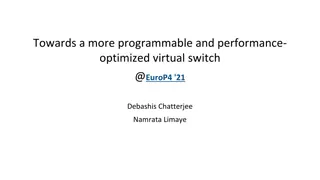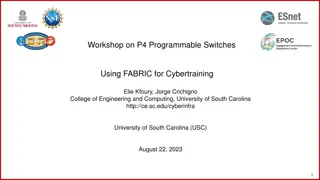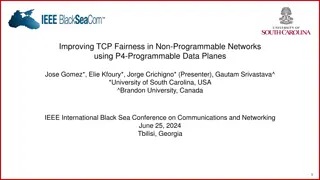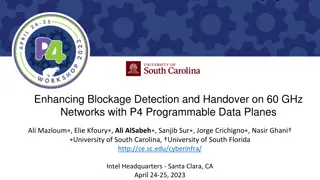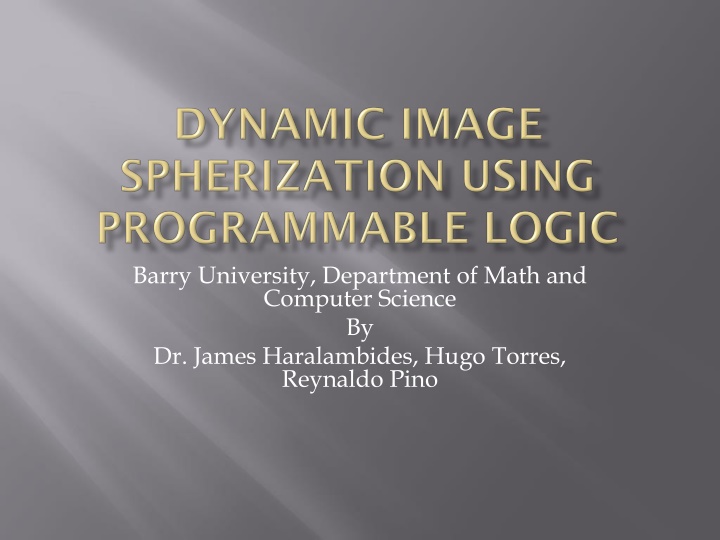
Exploring Image Filtering and Spherization Techniques at Barry University
Discover the innovative research and applications in image filtering and spherization conducted by Dr. James Haralambides, Hugo Torres, and Reynaldo Pino at the Department of Math and Computer Science in Barry University. From modifications like edge detection to advanced algorithms for spherization, delve into the world of transforming 2D images into 3D spheres. Learn about the process of spherizing an image using polar coordinates and FPGA integration, along with the hardware components and software tools involved in the process. Explore how serial cables, monitors, and visual basic are utilized to capture, transfer, and display images for computational analysis. Dive into the realm of converting images to 3-bit color, storing data in block RAM, and computing spherized image pixels using mathematical functions like sqrt, atan, sin, and cos.
Download Presentation

Please find below an Image/Link to download the presentation.
The content on the website is provided AS IS for your information and personal use only. It may not be sold, licensed, or shared on other websites without obtaining consent from the author. If you encounter any issues during the download, it is possible that the publisher has removed the file from their server.
You are allowed to download the files provided on this website for personal or commercial use, subject to the condition that they are used lawfully. All files are the property of their respective owners.
The content on the website is provided AS IS for your information and personal use only. It may not be sold, licensed, or shared on other websites without obtaining consent from the author.
E N D
Presentation Transcript
Barry University, Department of Math and Computer Science By Dr. James Haralambides, Hugo Torres, Reynaldo Pino
Intro to image-filtering Spherization theory Algorithm Hardware Components Conclusions Questions?
Modification of an image to achieve a modified result. Edge Detection Gaussian Blur Embossing
Spherization- modifying a 2D image so that it appears to be wrapped around a 3D sphere. Before Before After After
To spherize an image: Describing the pixel s location: Done using polar coordinates: Establish the center: W/2 Establish the angle of the input pixel in relation to the center using the Arctangent function. Find the Euclidian distance of the input pixel with relation to the newly established center.
Pixels original location serves as reference to find the data to be placed at the new location, since the data about the pixel itself remains unchanged. The function to find each pixel s new location is given by arcsin(( ) / ( old W D = ) 2 / ( old W X + = ) 2 / ( old W Y + = / ) * ) W * * D new ) ) ( ( cos sin D D old old
FPGA Integrated circuit designed to be reprogrammed
Serial Cable Used to transfer image data Monitor Used to display old and new image Visual Basic Used to capture image and to compile the table.
image capture using web-cam convert image to 3-bit color (FPGA limitation) Serial cable transmission store image to block RAM compute spherized image's pixels using sqrt, atan, sin/cos
We are not limited to just one model of spherization: Different modes of extentions exist: Center of sphere is offset. Radius is smaller than normal Spherization filter Negative Spherization. Offset Small Radius Negative
FPGA is limited compared to modern desktop, hence why using it to spherize an image is more complex than just using photoshop. The student version of the FPGA board is limited in color depth, data transmission, speed and memory size. Development boards are simply the opposite, used for professional designs.



